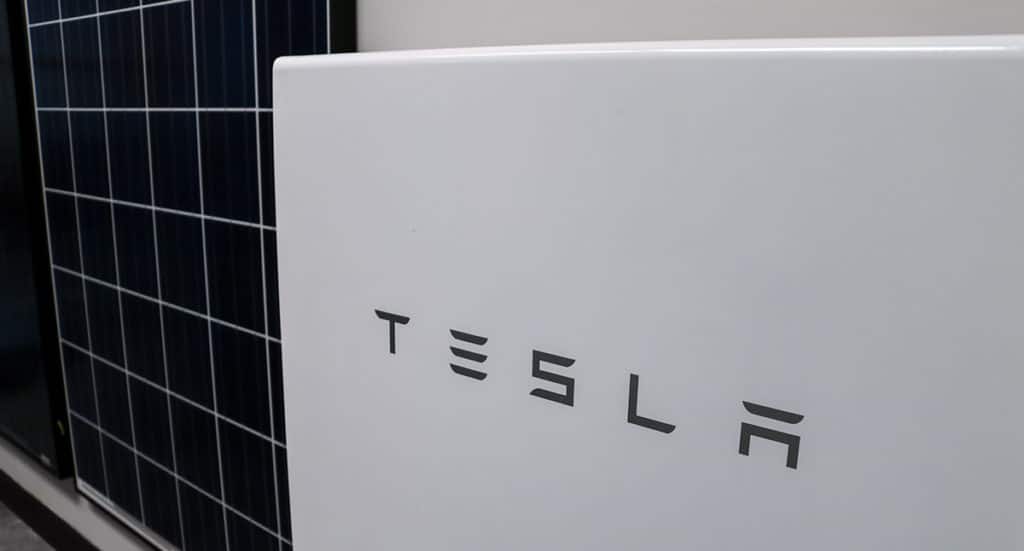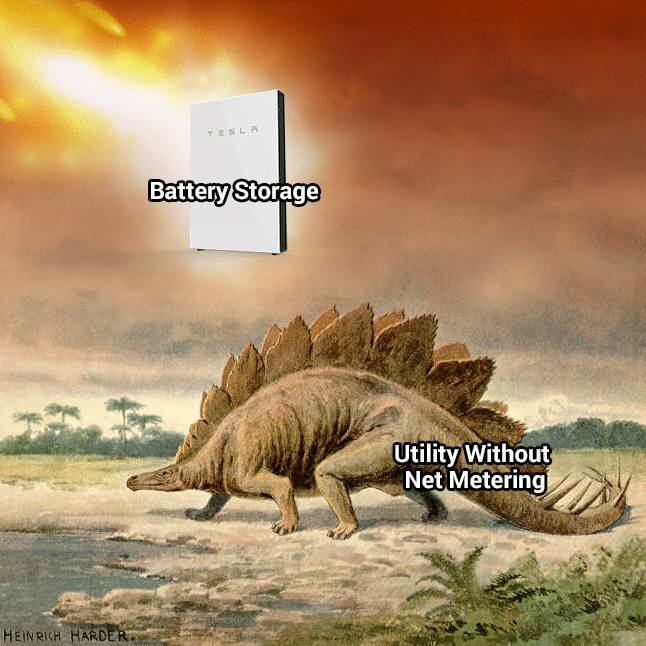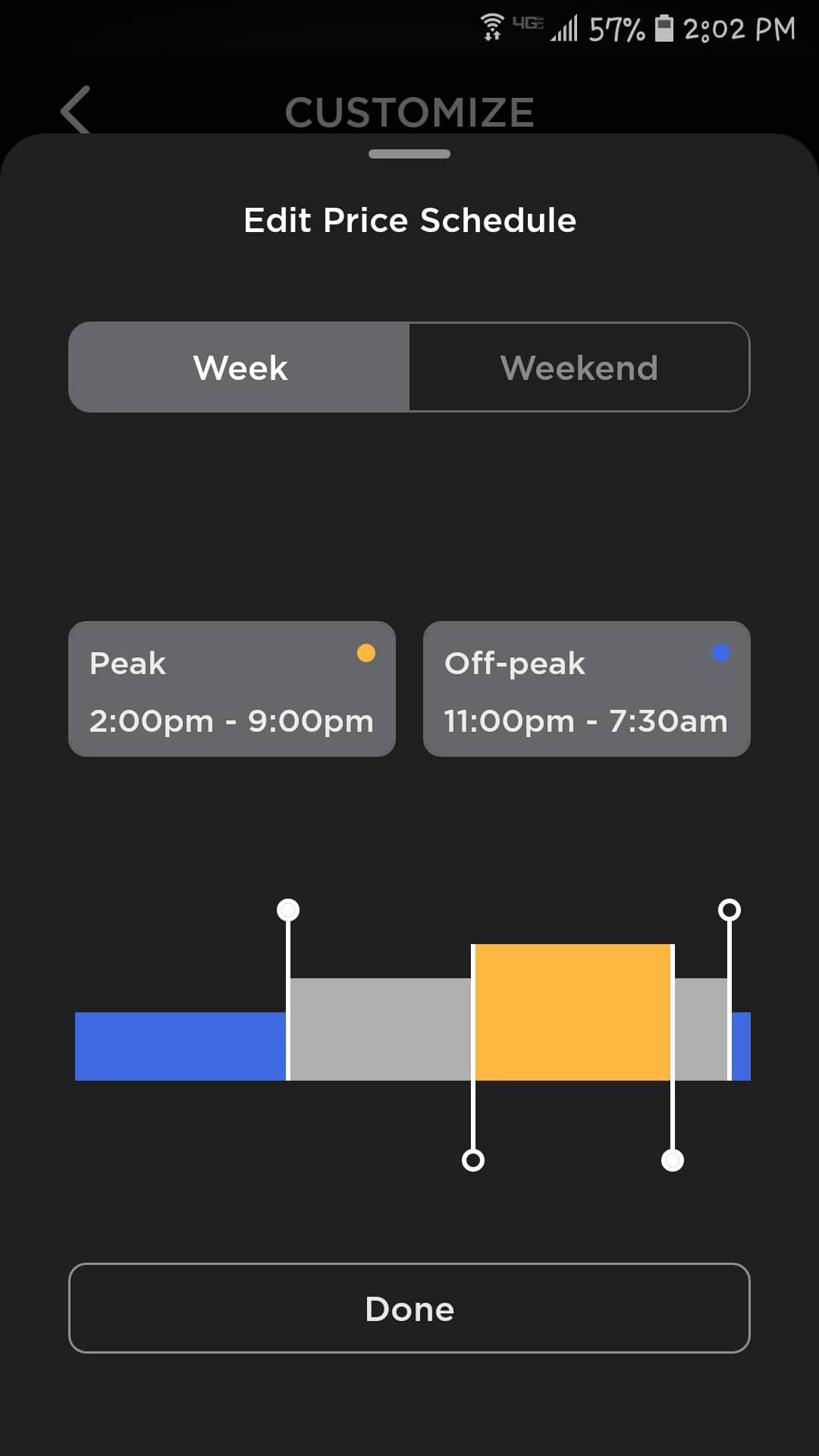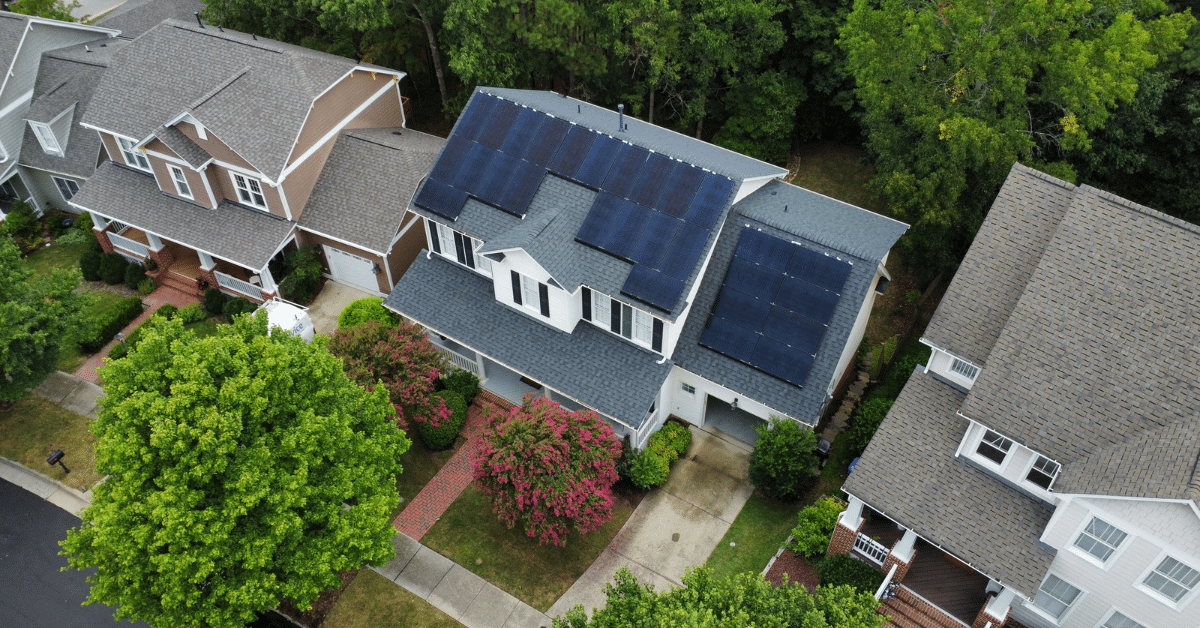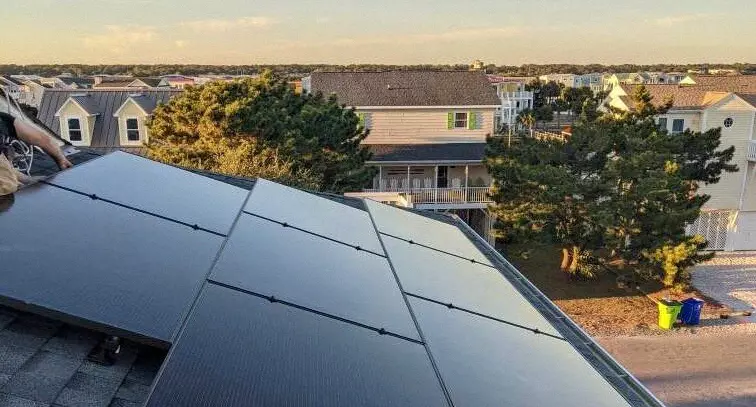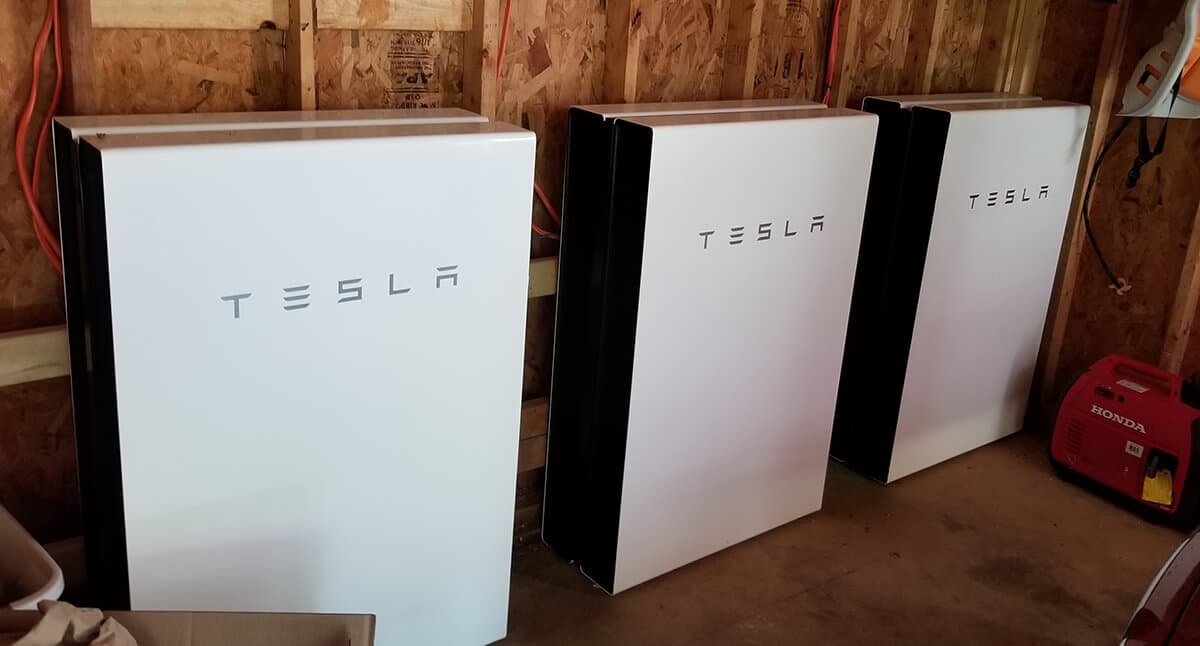On any given day, if you walk into our office on Triangle Drive, you’ll hear one of our solar educators in the distance answering homeowners’ questions about solar power and battery storage. As a certified Tesla Powerwall installer, we’re here to help you understand your options for battery storage and how it works with solar to keep you running on clean energy when the grid goes down. There are many products and factors to evaluate as battery storage technology advances and becomes more accessible. Here are a few considerations to look into when checking out PV+Storage options in 2019.
Quick Facts
- Most home storage options do not allow you to charge from the grid. This makes it cleaner to take the 30% tax credit because it only charges from solar.
- Batteries can be used to leverage the value of solar when a utility does not offer net metering or avoid high time-of-use rates.
- V2H and V2G are alternative battery storage options on the horizon.
- Battery storage solutions depend on your historic use, and what your needs/goals are.
Battery Storage 101
Batteries store excess electricity generated by a solar system to be used later in a home. We currently install lithium-ion battery systems like Tesla’s Powerwall and LG’s products. One Powerwall holds 13.5 kWh of DC energy on a full charge. In a grid failure, a single Powerwall will still operate and the home will automatically switch over to the batteries to draw power. In addition, the solar system will continue to recharge the batteries allowing homeowners to maintain critical loads in their home to keep the lights and fridge running while the utility is out.
Systems like the Powerwall come with an app that allows homeowners to see the state of charge of the batteries at any given time so they can manage their consumption to keep their home up and running longer. Even with this, most homeowners add an additional 2 to 3 Powerwall units to provide between 26 kWh and 52 kWh of backup power to keep their wells running, electronics working, air conditioning blowing, and fridge stocked.
Emergency Home Backup Options Compared
| Tesla Powerwall2 | LG Chem RESU | Portable Gas Generator | |
|---|---|---|---|
| Storage Type | Lithium-Ion | Lithium Ion | Gas, Propane, Diesel, or Natural Gas... i.e. Fossil Fuel |
| Energy Source | PV and/or Grid-Tied | PV and/or Grid-Tied | Gas Powered |
| Capacity | 13.5kWh | 9.8kWh | -- |
| Application | Solar self-consumption, time of use load shifting, backup, off-grid | Solar self-consumption, time of use load shifting, backup, off-grid | DIY projects, home use, emergency backup |
| Installation Option | Floor or wall mounted, indoor or outdoor | Floor or wall mounted, indoor or outdoor | Portable unit |
| Start Up | Automatic | Automatic | Manual or automatic |
| Warranty | 10 years, 70% capacity | 10 years, 60% capacity | 3 years |
| Price Range | $12,000+ | $9,000+ | ~$900 |
Other Uses of Battery Storage
Utilities Without Net Metering
Beyond backup power, battery storage can also be used to capture a higher value for solar in areas served by utility providers that don’t offer net metering. In regions where “Buy-All-Sell-All” interconnection is the only option, homes are obligated to sell all of the energy they generate from their solar system back to the power company at a very low wholesale rate (the “Sell-All” part) while still having to buy all of their purchase power at the more expensive retail value (the “Buy-All” part). Because you only get 50-60% of the retail rate for solar energy with Buy-All-Sell-All, going solar just doesn’t make a lot of financial sense for people imprisoned in utilities that still hang on to these Jurassic era policies.
Batteries provide a way to circumvent this problem. You can install a solar system that doesn’t interact with or send any energy to the utility (the industry jargon for this is “behind the meter”). When your solar system produces more energy than your home needs, it stores the energy in your battery. At night, when the sun doesn’t shine (generally), you can use the energy stored in the battery in your home and, voilà, you’re getting the full retail rate for you solar energy because you’re directly offsetting the energy you would buy from the utility. This setup requires a thorough analysis of your historic energy use patterns in order to ensure that you have the right amount of battery storage to capture all of your excess solar.
Time-of-Use Rate Schedules
Many utilities offer Time-of-Use (TOU) rate schedules where the cost of electricity increases or decreases depending on the time of day. Generally, higher rates are charged during the utility’s peak demand periods — early morning in the winter and late afternoon in the summer — to encourage customers to use less energy. This benefits the utility by reducing strain on their grid and avoiding having to ratchet up energy generation by using costlier (and often dirtier) “peaker plants”.
By using a battery storage system, solar system owners can maximize their solar energy savings by programming their systems to store energy when rates are low and then use their stored energy when rates are high — the same “buy low, sell high” idea that is central to every marketplace. At the end of the day, solar + battery system owners are able to help their utility with the complex problem of managing peak loads (which they may feel ambivalent about) and recieve more money for their solar energy (which they’ll certainly be happy about). Hooray for capitalism!
Currently, shifting around your energy use with batteries to take advantage of time-of-use rates is simple with the Powerwall. We expect it to become much more prevalent over the next 3-5 years as technology advancements make programming a battery to a time-of-use schedule even easier.
Vehicle to Home (V2H) Storage
Vehicle to Home transmission, or V2H, is an alternative solution to traditional home battery storage. This is where plug-in electric vehicles can be used for back-up power by storing DC electricity generated by a solar system then converting it to AC electricity that can be redistributed to the home. A Power Control System (PCS) is needed for vehicles like the Nissan Leaf to connect its lithium-ion battery to the home’s distribution board. V2H is a great option as a backup power solution because the capacity of a plug-in vehicle battery is much larger than a traditional battery storage unit.
Likewise, Vehicle to Grid (V2G) storage functions in a similar manner, where excess energy is stored for output to the grid when it is needed most and/or when it’s most valuable. This model can help to balance some of the supply and demand issues all utilities face. For example, sending power back to the grid when demand is high in the late afternoon helps alleviate the impact of the duck curve effect. There have been conflicting studies about the long term effect of battery cycling and whether or not V2G use will degrade the battery’s capacity (one study conducted by Carnegie Mellon University actually found minor benefits). As far as emergency home backup supply goes, the frequency of using the vehicle’s battery as a V2H system should not have a major impact. We predict V2H will start to take off in the next 3 to 5 years and for V2G to follow a few years afterward as technology advancements make it simpler for customers to capitalize on time-of-use electricity pricing.
Which Battery Option is right for you?
Which battery storage is right for you — traditional or an alternative solution like V2H — depends on your main goals. If you’re looking for a straightforward and reliable solution, that’s available today, you can’t beat a traditional battery option like a Tesla Powerwall. Plus, let’s not pretend, the Tesla brand possesses galactic proportions of sexiness and power that make this option even more alluring. However, if you’re just looking for an emergency power backup solution, a strong argument can be made that a V2H system makes the most economic sense AND you could still use Tesla! Let’s take a quick look at the numbers:
A new Chevy Bolt comes with a 60 kWh battery and a price tag of around $40k. The equivalent backup battery for a home would cost at least $10k more. Alternately, you could upgrade to a Tesla Model S, which has the biggest battery available in the US at 100 kWh, for around $100k. At this point, you’ve accumulated right around 7.5 Powerwalls of storage, all within the car in your garage. The price of that Model S may be more than the 7.5 Powerwalls, but not by much — and the garage space saved is not trivial! In this sense, car batteries can be less expensive than a stationary lithium-ion in-home battery system, so you could say you get the car for free.
Powering Down...
As this post runs out of storage, here are some final battery takeaways.
The great age of battery storage is finally here.
For decades, batteries were only for die hard off-gridders and the green elite, but that’s no longer the case. While battery storage is not a trivial expense, it now provides a true alternative to the classic gas generator that is cleaner, simpler, more versatile, and scalable. There is also no gas generator available with a Tesla logo on it… As battery technology becomes more efficient, production continues to ramp up, and prices drop, these batteries will only become more competitive, useful, and common place.
V2H and V2G are coming, just a little slower.
What is keeping V2H and V2G from growing quickly? First, electric car manufacturers warranty the batteries in their cars, but they need to know how they’re being used and that they’re not being drained or charged improperly in ways that could damage the battery. Using the vehicle’s battery as a V2H storage option could pose problems when trying to claim the manufacturer’s warranty based on their warranty terms. Another challenge is that there are currently no inverters available in the United States that can be used to connect an electric vehicle to a home with a solar system. We expect a inverter with these capabilities to be available within the next year!
What's Next?
Ready to learn more about your options for battery storage today or how we can use your solar system to build a better battery plan for you in the future? Reach out to one of our solar (+battery) educators today!
Top 17 Powerwall Questions Answered
Ready to Get Started?
Schedule a free assessment to learn more about solar power & battery storage for your home.
About Us
North Carolina’s solar power and building performance expert. Founded in 2001, we’ve worked for 20+ years to improve the way people make and use energy.

